Peter Halliday has shared some great links related to Raimbault Creek and other Montreal lost creeks
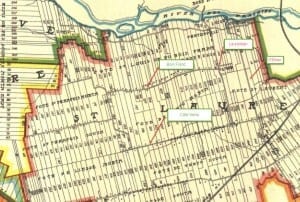
1907 map, which includes an image of Raimbault Creek as it existed at the time. The early map, Tim Hewlings (MCHS '63) notes, is from: A. R. Pinsoneault, Atlas of the Island and city of Montreal and Ile Bizard, s. l., The Atlas Publishing Co., vers 1907 found on the BANQ website.
Peter Halliday, who has shared with us an aerial photo featuring Raimbault Creek in Cartierville, which I’ve posted to this site in the past, has shared the following links.
Peter Halliday writes:
This is the archives I’ve been poking around in:
http://archivesdemontreal.com/greffe/vues-aeriennes-archives/jpeg/VM97-3_7P9-59.jpg
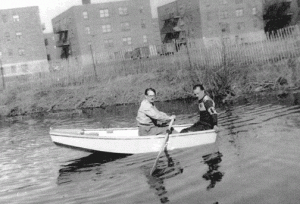
1950 photo of Raimbault creek which once passed through the borough of Cartierville. Photo source: Ville St. Laurent Archives. See Brooks in the City link accessible at the blog post you are now reading.
The indication on the image is 24-29 and you can access the photo by the link for 24-29. 24-28 and 24-30 are east and west of that photo, and 25-29 is directly north, they all have views of the creek that would run through my neighbourhood near MCHS. After that, the pattern seems to break down. You might have more luck or more time to poke.
This is the website with the link:
http://archivesdemontreal.com/2014/03/07/montreal-depuis-les-airs-en-1925-1935-et-en-1958/
Peter adds:
There are some great images in here:
http://undermontreal.com/montreal_lost_creeks_rivers/
[End of texts and links from Peter Halliday]
Comment
I’ve posted a few of the images from these links. I’m not in a position to post more at this time as I have many other things to focus upon.
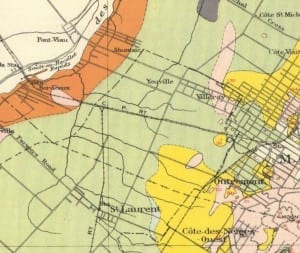
The far-reaching arms of Ruisseau Provost (or Cote Des Neiges) shown here on a map from 1916. The image is from the Brooks in the City link at the blog post you are now reading.
If you as a site visitor can find a great image, that relates to discussions we’ve had to date – for example, regarding Raimbault Creek, Marlborough golf course, or the forest that used to exist in Saraguay – please let us know the link, and I will post the photo. You can contact me at jpill@preservedstories.com if you wish to send me a link.
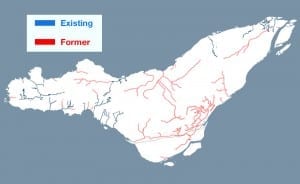
Old and existing creeks in Montreal. The map is from the Brooks in the City link at the blog post you are now reading.
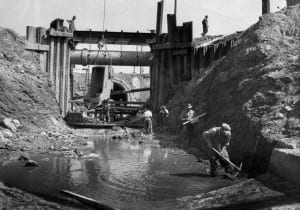
Preparing the foundation for the Meilleur-Atlantique tributary sewer on north shore of Montreal. The image is from the Brooks in the City link accessible at the blog post you are now reading.

I think I read somewhere long ago that a street in downtown Montreal, running east/west between University St & Guy, used to be a stream or creek. So it was called Burns Street (“burn” being a Scottish word for small river). This street is now a part of de Maissoneuve Bd.
Thanks for passing that along Eric. My memory might be a little suspect, but I think that the entire length of de Maisonneuve was called Burnside years ago. For some reason I think it was renamed in the late ’50’s or very early 60’s. At least now I understand the derivation of the name.
Marty, you’re quite right about the name being “Burnside”, not “Burns” as I said. At one time way back when, James McGill, the founder of the University, had a farm through which the “burn” flowed.
You’re also quite right that your memory is suspect as far as the entire length of de Maisonneuve once being called “Burnside”. De Maisonneuve is 11 meters long and extends well into East Montreal where few if any English or Scottish street names were/are to be found. After reading the Wikipedia article about de Maisonneuve Bd., I correct my earlier suggestion to say “Burnside Street” ran between Stanley St. and Union St (one block east of University St.)
Peter Halliday, I can get to the archives of Ville de Montreal and “”vues aeriennes” but navigation after that is very difficult.
Eric, navigation is brutal on that website. Patience.